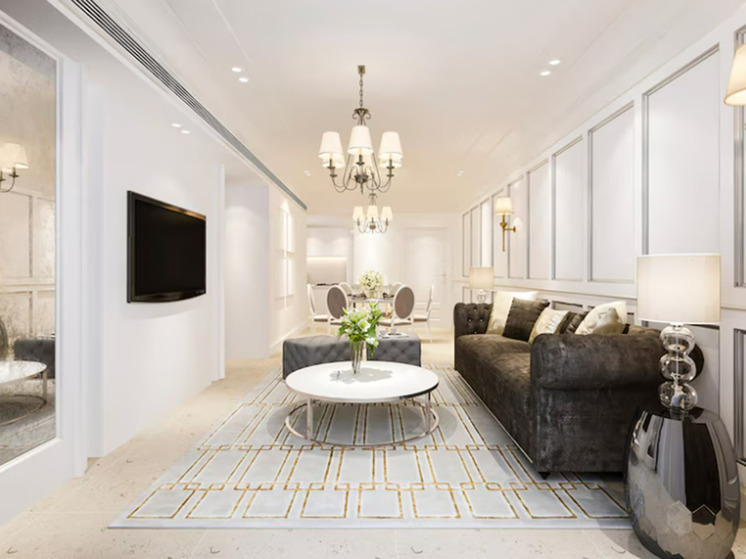The indicator increased in all housing segments, except business class
Apartments and apartments on the primary housing market within the historical borders of the capital in the period from 2021 to 2024 became higher by 4 centimeters. The average ceiling height in new “old” buildings is Moscow is now 2.92 meters. Three years ago this figure was 2.88 meters.

The most significant increase in ceiling height over three years was recorded in the elite segment: 3.33 meters versus 3.19 meters in 2021. The trend is primarily due to the growth in the exposure of the most expensive deluxe class projects.
“Historically, high ceilings were designed in palaces and mansions, which reinforces their status as a symbol of luxury,” says the director of luxury real estate management at Metrium Premium. Anna Radjabova. — Nowadays, this attribute is typical, first of all, for luxury housing. At the same time, only seven elite and deluxe projects on the primary market have ceilings higher than 5 meters. And the record in the entire history of the primary market is 9 meters in the Federation tower.
The average ceiling height in premium projects is 3.12 meters. Three years ago it was 3.1 meters, that is, the height of the ceilings in new premium buildings has increased by only two centimeters.
“The height of the ceilings seriously affects all key parameters in the apartment and usually impresses even the most experienced clients,” notes commercial director of Regions Development Liliya Artsibasheva. — Firstly, high ceilings create a feeling of spaciousness and openness, visually expanding the space. Secondly, such apartments often have beautiful large doors and panoramic windows with a wide view. Thirdly, high ceilings contribute to better ventilation and air exchange in rooms. Fourthly, this is the key to high-quality acoustics. In addition, high ceilings open up wide scope for interesting design solutions, especially in the area of lighting.
In business-class projects, the average ceiling height is now three meters. In 2021, this figure was 3.02 meters — 2 centimeters less. The main explanation for this trend is the flow of many new “comfort plus” complexes into in business class.
In the mass segment, the ceiling height is on average 2.76 meters. Three years earlier the figure was 2.73 meters. The slight increase in ceiling heights is due to a reduction in the launch of standard-class projects by developers to the market.
As for New Moscow, the average ceiling height in new buildings is 2.88 meters. Three years earlier the figure was 2.85 meters. The indicator in New Moscow is higher than in the mass segment within the historical boundaries of the metropolis. This is due to the fact that the market leaders in the Troitsky and Novomoskovsky administrative districts primarily build houses with ceiling heights of 2.8 meters.
The maximum average ceiling height in Moscow was recorded in the Central District — 3.18 meters. It’s clear why: in the city center premium and luxury projects predominate.
The average ceiling height in apartments on the primary market in Moscow is 2.9 meters, in apartments — 3.02 meters, that is, 12 centimeters higher. The only reason for such a significant difference is that apartment complexes are less common in the mass segment and in New Moscow than in more expensive residential complexes.
The lowest ceilings are offered in a comfort class project in the Nizhny Novgorod region ( South-Eastern Administrative District) — 2.59 meters, the highest — in an elite project on Savvinskaya Embankment in Khamovniki (Central District) — 6.43 meters.


